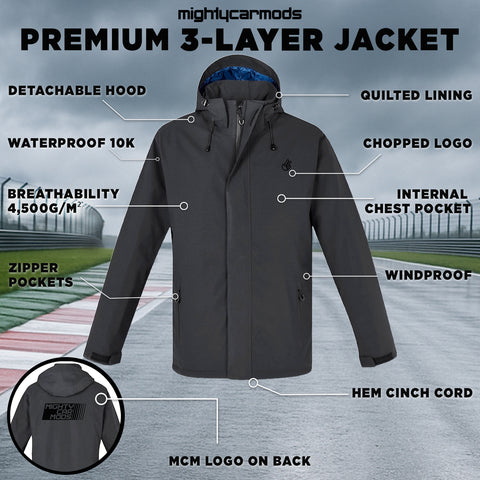
Chronic rust isn't a death sentence for your car
Rust is the one thing every car enthusiast hates dealing with. While it nearly always means you'll be going through the tedious process of painting and re-fitting a car, structural rust has the potential to kill a car outright.
If the actual structure to your car is compromised you really need to fix it for the safety of everyone in and around it. Similarly, catastrophic body rust needs to be fixed so your car doesn't fold up like a cheap deckchair if the worst was to happen.

While it isn't a simple job, you can save your beloved nugget with a lot of hard work and plenty of consumables. The scary part of this is knowing you'll see your car stripped back further than a bare shell - you'll need to de-skin your car!

The reason so many people de-skin their car is access. You need access to firstly see what rust needs to be cut out and replaired, and then you need room to work. It also makes it far easier to treat any rust that doesn't need to be removed.
Being able to see all the trouble areas means de-skinning a car is what happens to high-value cars going through big builds, like the first-generation Monaro below.

With even rough examples of Holden's first proper muscle car selling for more than the cost of a new WRX, and the cost of a full restoration on these cars often exceeding $250,000, it makes sense to be as thorough as possible in cleaning rust and dirt from areas you can't access.

Even if your classic isn't rusty in all these areas, their design means they can still trap dirt and dust which, over time, will rot the metal out. If you're already going through the cost of a restoration, you may as well take the extra time at the start to check and make absolutely sure there are no problems for Future You lurking.
But how do pull these panels, and other skins off? Unfortunately, unlike the front panels and doors, they don't unbolt. So, you have to get far more hands-on.

Old school cars use a large number of spot welds to bond sections of the shell together. Welding a full seam is great for strength and this is where race teams used to "seam-weld" a shell together to increase stiffness, but this is simply too time-consuming and expensive to do on a production line.

There can be dozens of spot welds holding each section of the car on, and these all have to be drilled out (and some cuts made) to pull the panel skins off. While regular drill bits can be used, there are spot weld bits that are designed specifically to knock the spot welds out (see below).

Before going ham and de-skinning your car you're going to want to brace the shell thoroughly. The skins form part of the structure of the car, and if you cut the structure without reinforcing the shell, you risk the shell twisting out of alignment and this can be catastrophically laborious to correct later on.
If you're going to be undertaking chassis work while you're de-skinning, welding the car to a chassis table is almost a requirement. This will hold key sections of the car in place and, once the shell is braced, should mean everything will go back together how it is meant to.

If you think the car's structure has already been compromised then before welding the car to the table you'll need to take a lot of measurements off a known good car and write them down, then pull the car in different directions to get those datum points in their correct positions. If you're thinking this is pretty advanced, then you'd be correct - this is really a job not to be undertaken unless you have help from a professional collision repair expert.
De-skinning a car is a huge, dirty and noisy job. But, once done you can undertake a proper restoration of the nugget you're working on. Just remember your PPE and to have a lot of space clear to store the parts!


![Limited Edition Budget Street Cred Golf Poster [AUTOGRAPHED]](http://mightycarmods.com/cdn/shop/files/FullSizeRender_480x480.jpg?v=1760910149)
![Boosty Boi T-Shirt [Black Edition]](http://mightycarmods.com/cdn/shop/files/DSC2662_b504777a-ecdc-4da2-8b18-b4b525bce4d5_480x480.jpg?v=1759355323)
![Chopped MCM Hoodie [Black Edition]](http://mightycarmods.com/cdn/shop/files/DSC2445_d41795ae-8f15-4257-8ae2-60623a893824_480x480.jpg?v=1759099951)
